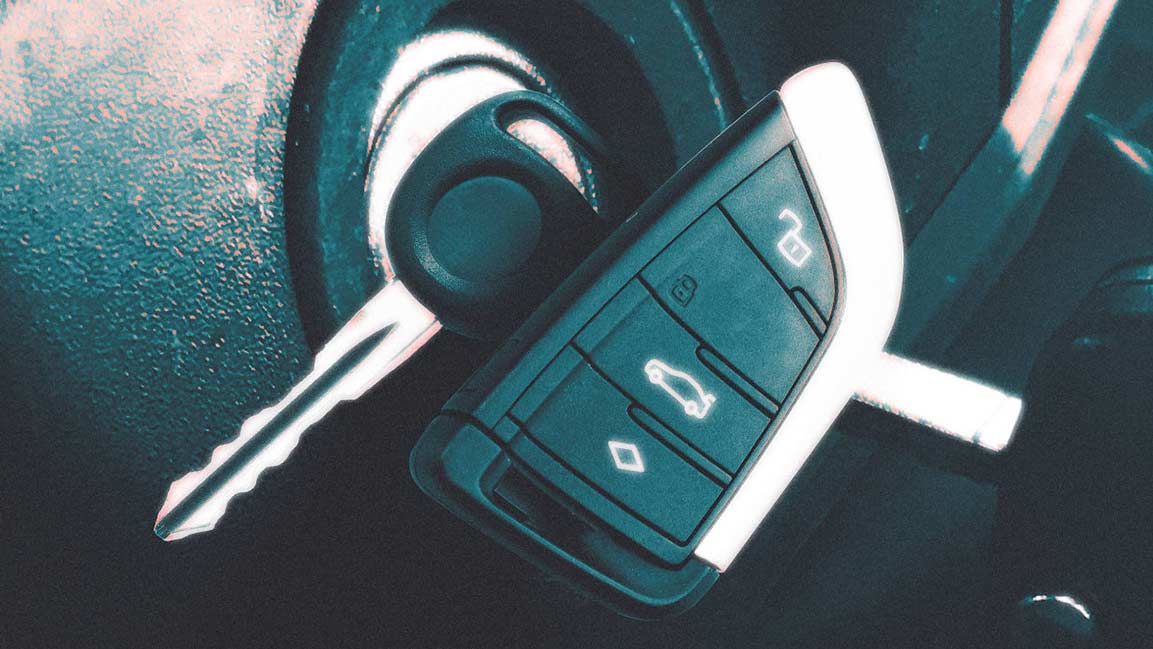- | 9:00 am
Why Good UX Is No UX
The founder of StreamAlive believes great technology is so intuitive that it is invisible and great technology experiences are created when they feel like a natural extension of our everyday lives.

Recently, during some downtime, I found myself down a research rabbit hole, fascinated by the evolution of modern car keys. Almost totally utilitarian, we rarely consider how much innovation has happened to car keys over the last 75 years.
In 1949, Chrysler debuted the first key that would start the car with a turn of the ignition tumbler, effectively replacing the two-step turn-key-and-press-starter process before it. Innovation stalled for 15 years until Ford released the first double-sided key that allowed the driver to insert it into the tumbler in either orientation.
From 1965 on, car keys have seen many more iterations—from laser cuts for increased security to proximity fobs and remote start to app-only entry in the modern Tesla.
But why does all of this matter? The key (pun intended) design principle that continues through each of these iterations is that every improvement is meant to make the experience more natural for the consumer, more frictionless. So much so that, today, many of us don’t realize our car keys are not with us until our car doesn’t start.
I believe that the same can be said of user experience (UX) in modern technology. Good UX is, indeed, no UX at all. In other words, the technology we interact with daily should fold so seamlessly into our regular lives that we don’t know it’s there.
I’m certainly not the first founder or technologist to have said this, but I fundamentally believe that this principle underscores the very best in user experience design and is essential to creating enduring products. Invisible UX should be something to aspire to. To borrow from a fellow founder and author, Amber Case, when design, like glass windows, is transparent, users can focus on what’s beyond the interface and how their lives are made easier by the technology they interact with.
As you endeavor to build tools that integrate seamlessly into your customers’ lives, consider taking these three steps to achieve UX excellence.
MEET CUSTOMERS WHERE THEY ARE
An industry colleague once described our platform, StreamAlive, as “a way for the audience to engage without learning something new.” The comment underscores what I believe to be the first principle of strong design: meeting your customers where they are.
As you design a product, it’s important to understand how your interface aligns with your user’s existing behavior and knowledge.
- Is your product intuitive?
- Does it operate similarly enough to widely adopted tech like, in our case, PowerPoint that users are already familiar with?
- How effortlessly does your product integrate with daily tools?
When you make it easy to fold your tool into users’ existing routines, you are well on your way to maximizing adoption and creating magical experiences.
As Artur C Clarke famously said, “Any sufficiently advanced technology is indistinguishable from magic.”
SET IT AND FORGET IT DATA
Beyond meeting your users where they are, solutions that require little maintenance see greater customer lifetime value. Much of this seemingly effortless maintenance falls on strong dev teams who work to keep uptime high and fix breakdowns quickly.
One cloud storage powerhouse mastered this concept early on in its journey, likely contributing to its long-term success. Dropbox, cofounded by MIT students Drew Houston and Arash Ferdowsi made their mark in a competitive startup space by solving a problem that users didn’t know they had.
As cofounder of a backup software company at that time, I had a ringside seat into the space and how Dropbox stood out. At the time, in 2007, thumb drives were the norm. You tossed it in your school or work bag and could work on the same files at home and in the office—offering a new kind of work-life freedom. But what happened if you lost it? If you were smart you had a backup drive, but your work was only as up to date as the last time you saved it.
Dropbox was different. With a single install, your files lived across every device and were updated in real-time. By adapting to a variety of different computer platforms and operating systems, Dropbox eliminated the need to visit the platform’s web interface, so most users rarely do. Suddenly, using Dropbox is no more or less difficult than using the device’s default file manager.
ENSURE PRODUCTS WORK HARDER THAN USERS
The key to achieving UX excellence is to have the product do more work than the user. Meaning, every experience with your product should be an iteration of the one before. How predictive is your predictive search? Hard work on the back end can make the user experience feel nearly effortless.
What stands out about this partnership is how little is required from end users to “Google” something straight from their device. Often Apple users don’t even have to navigate away from their home page. Google, in turn, benefits from a host of user data.
Looking forward to 2024, we anticipate a tech landscape where AI-driven UX, extended reality, and ethical design take center stage. Just as car keys evolved to be forgotten until needed, we believe that great technology is so intuitive that it is invisible and that great technology experiences are created when they feel like a natural extension of our everyday lives.





































